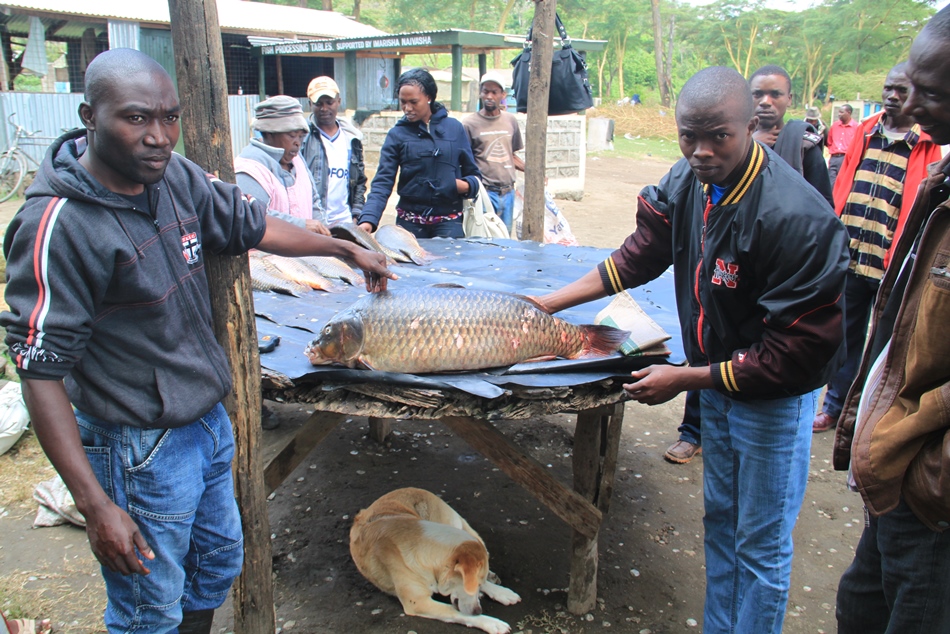Fish community

The aquatic community is particularly poor in endemic species due to natural extensive water level fluctuations that caused the lake to dry out completely several times in human memory, . One endemic cyprinid, known as the the 'small-toothed carp' or 'black lampeye' Aplocheilichthys antinorii (Vinc.), was declared extinct in 1964 after no specimens of this fish had been found for several years.
A major recent change occurred in the fish community of Lake Naivasha, when long-term dominance by the tilapia Oreochromis leucostictus and Tilapia zillii (Cichlidae) was replaced by carp (Cyprinus carpio, Cyprinidae) after its accidental arrival to lake Naivasha due to the 1999 copious 'El-Niño' rains which swept it down from an upstream dam. The Kenya Fisheries Department, Nyandarua Office, had introduced some carps bred in the Sagana Fishery (Tana River Basin) into Gwakiongo Dam at the sources of the Gilgil River few years earlier. As from 2004, carp dominated fish catches at the lake; in some years >95% of the annual yield was represented by carp. Fish catches have been increasing after 2009, a year of unusually low water level.
From top to bottom: blue spotted tilapia, carp and large-mouthed bass are the typical commercial fish species being caught at Lake Naivasha.
Other tilapias include Tilapia zillii and Oreochromis niloticus; this last one being massively spread by initiative of the Kenyan Ministry of Fisheries in the attempt to promote tilapia cathes in the lake. Early studies about the tilapias were conducted by Siddiqui (1977a, 1977b, 1979a, 1979b).
An important species from the point of view of the lake ecology is Barbus paludinosus (B. amphigramma, Cyprinidae), a tiny pelagic native sardine-like fish. which is not intensively fished, but which is highly abundant. It was confined to the river Malewa until the late 1980s when fisherman found it had colonised the lake, becoming a breeding fish in the 199os. It is an effective zooplankton consumer, B. amphigramma could have a significant impact on the control of zooplankton biomass and through the trophic cascade on algal grazing and water transparency, but has never been studied for its impact.
The large-mouthed bass (Micropterus salmoides, Centrarchidae) which had been introduced from North America as sport fish in 1929, after recommendation of President T. Roosvelt at his state visit in 1907 . Subsequent releases occurred, together with tilapias for food, in the 1940s and in 1951. Today bass persists in moderate numbers, confined to lake edges characterised by rocky substrates.
A catfish, identified as Clarias gariepinus (Clariidae), appeared in the lake during the last five years, probably also washed down from fish ponds which recently became established within the basin.
Also present, but in low numbers, are the mosquito fish Poecilia reticulata (Poeciliidae), originally from South America and introduced in the 1960s for insect pest control.Finally, the North American rainbow trout Oncorhynchus mykiss (Salmonidae) is common in the rivers but rarely found in the lake.



